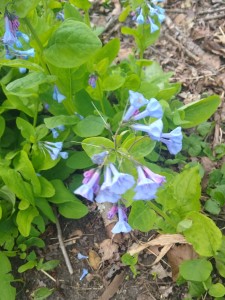 When it comes time for a spring break, many people head far south to places like Florida. Last week I headed south too, but only as far as the Brandywine Valley, a place where northeastern Pennsylvania melts into Delaware. The Brandywine was the site of a famous Revolutionary War battle and gained additional fame in the twentieth century as the home and inspiration source of American artists in the Wyeth family, including the patriarch, N.C., and his son, Andrew. The area is also known for great, though sometimes stark, natural beauty, not to mention significant public gardens, like Longwood, Nemours and Chanticleer.
When it comes time for a spring break, many people head far south to places like Florida. Last week I headed south too, but only as far as the Brandywine Valley, a place where northeastern Pennsylvania melts into Delaware. The Brandywine was the site of a famous Revolutionary War battle and gained additional fame in the twentieth century as the home and inspiration source of American artists in the Wyeth family, including the patriarch, N.C., and his son, Andrew. The area is also known for great, though sometimes stark, natural beauty, not to mention significant public gardens, like Longwood, Nemours and Chanticleer.
I sampled as many of Brandywine’s delights and attractions as I could fit into five days, but one of the most beautiful sights was a plot of native Virginia bluebells or Mertensia virginica on the grounds of the Brandywine River Museum in Chadds Ford, Pennsylvania.
Some people may also know Virginia bluebells as “eastern bluebells”, “Virginia cowslips”, or even “pulmonaria oysterleaf.” Whatever you call it, the plant is glorious in mid spring, standing up to two feet tall, with alternating ovoid leaves that are purple when they first appear, but morph quickly to green or gray-green. The flowers get their vibrant blue color from membership in the large borage family, which is also home to the herb of the same name, as well as various species of pulmonaria or lungwort. Each bloom is comprised of a long tube that opens into a bell shape at the end. The individual flowers are lovely, but they create the greatest floral drama by gathering into showy, pendant clusters at the tops of the stalks.
To see one Virginia bluebell plant is a revelation. A small field of them looks very much like a miracle. The array I saw at the Brandywine River Museum brought to mind pictures of English “bluebell woods”. In England those woods are populated by another spring–blooming species, Hyacinthoides non-scripta, which is related to the common Spanish bluebells or Hyacinthoides hispanica that many of us have in our gardens. Under good conditions, both plants form sheets of blue in their respective situations. Virginia bluebells have the added attraction of being native to the eastern United States and Canada, making them an even bigger boon to local pollinators like butterflies and hummingbirds.
Bluebells prefer semi-shaded sites with consistent moisture. The Brandywine specimens that I saw benefitted from this year’s cool rainy spring, which made them handsome and healthy, and also probably prolonged their season of bloom. Though the bluebells are native and can form colonies on their own, I believe the ones at Brandywine were planted intentionally, part of efforts supported by the local Brandywine Conservancy to encourage native species and ecosystems. Here and there, they were interspersed by other indigenous spring-blooming plants including the little pinky-white claytonias and the handsome golden-yellow celandine poppies. Smaller, buttery marsh marigolds were also present in wetter places, along with a few dog-tooth violets.
Though I love Andrew Wyeth’s work, the visual effect of all those flowering plants in the spring sunshine was less Wyeth and more Monet.
Somc sources note that habitat loss and other factors have made Virginia bluebells endangered in at least some parts of their North American range. The best way to save the bluebells is to grow them. They are part of the tribe of spring ephemeral plants that sprout, flower, set seed, and fade away before the onset of summer, so they can easily be interplanted with specimens that come along later, like hostas. New Guinea impatiens or other annuals that do their best work in summer and shade, are another option. If you plan on installing annuals, take pictures of the bluebells’ locations, so you don’t inadvertently dig them up.
Native Americans knew and loved bluebells, sometimes using plant parts for medicinal purposes. Scientists have yet to establish the curative power of Mertensia virginica, but the bright blue flowers are a tonic for the spirits after a cold gray winter. If you want to try this mood lifter for yourself, check local garden centers or Prairie Nursery, P.O Box 306, Westfield, WI 53964, (800) 476-9453; www.prairienursery.com.
